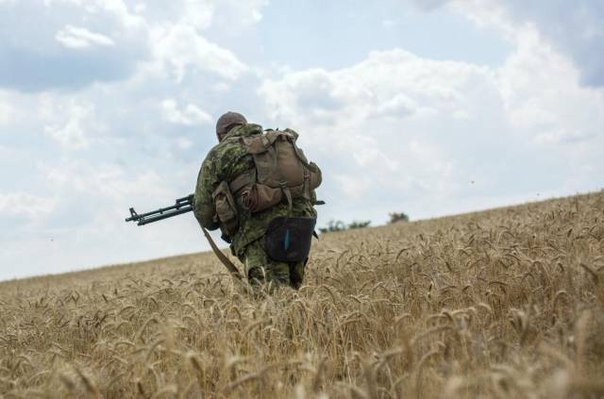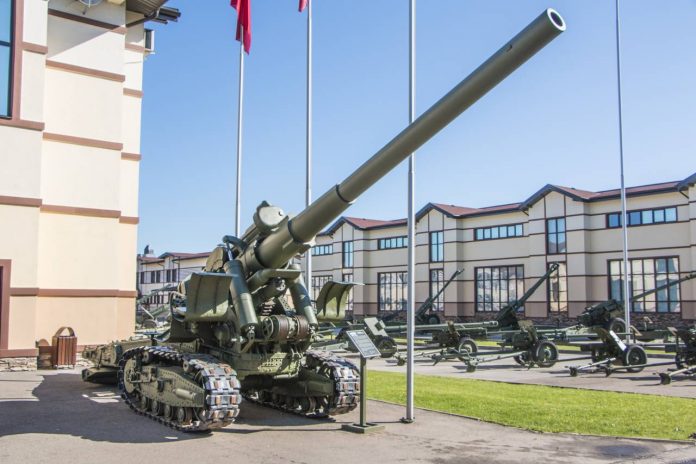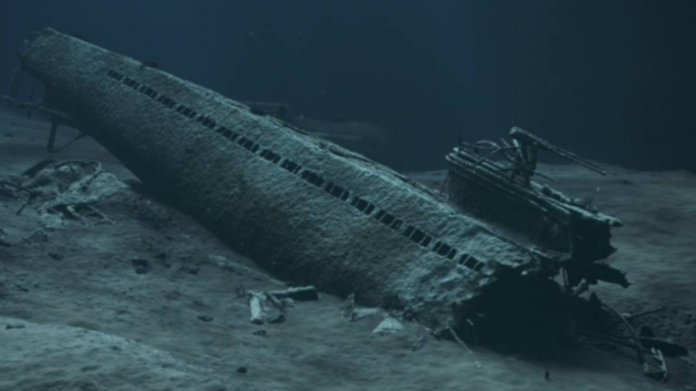
begining 1945 of the year. In coastal waters of Norway, a British submarine pursued a German submarine. Both ships went deep, and an unusual situation developed. So far, no underwater attack by an enemy ship, also at depth, unsuccessful.
American, British and Canadian forces were advancing in western Europe, in the east the Germans were pushed back by the Red Army, preparing to occupy East Prussia. To contain the advance, Hitler decided to use Grand Admiral Karl Dönitz and his submarines. Nazi Germany wanted to share experimental "Wunderwaffe" technology with Japan.
Germany and Japan are relatively small countries, besides, they were separated by the spheres of influence of the allies, vast territories. It was decided to use submarines. Between July 1944 to January 1945 six submarines delivered strategically important raw materials (lead, rubber or tungsten) from territories, occupied by Japan, to the Third Reich.
German submarine U-864 carried one of the technologies "Wunderwaffe". Spare parts and assembly diagrams for Messerschmitt-163 "Kometa" and Messerschmitt-262 "Lastochka" were loaded on board. Operations were codenamed "Caesar". Messerschmitt engineers also sailed from Germany., including Deputy Head of Engineering Rolf von Hlingensperg and Ricklef Schomerus, Chief Aerodynamics Expert for the company's Advanced Jet Aircraft Division. And two Japanese experts: rocket fuel specialist Toshio Nakai and acoustic homing torpedo specialist Tadao Yamato. Information, necessary for the mass production of "wonder weapons", they got first hand.
Yamato spent four long years in Germany, and Nakai, graduate of the prestigious Tokyo Imperial University, was one of the finest civilian explorers of the Imperial Japanese Navy. Knowledge, which they received abroad, were vital to Japan's military objectives and the island nation's reproduction of technological wonders, carried by submarine. Experts hoped, that German technology in the hands of Japanese workers would turn the tide of the Pacific War in Japan's favor.
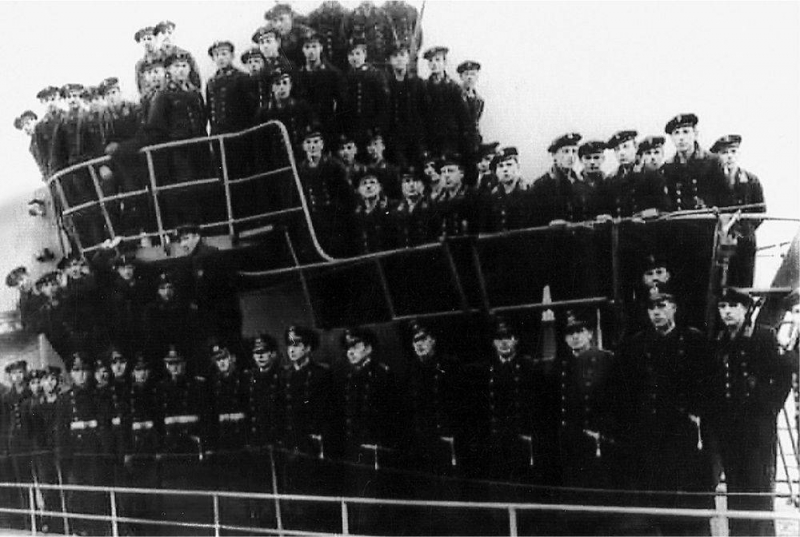 Crew of U-864 before sailing.
Crew of U-864 before sailing.
U-864 - Type IX D2 submarine with increased autonomy, long-range hike. Her captain Ralph-Reimar Wolfram was relatively inexperienced and seemed like a curious choice as a commander for such an important task.. However by the end 1944 years of loss of German submarines were, that experienced captains were lacking. Period, which the German submariners called «happy time», when their packs of wolves roamed the oceans with impunity, ended. Their fleet suffered heavy losses. Now the hunters are prey.
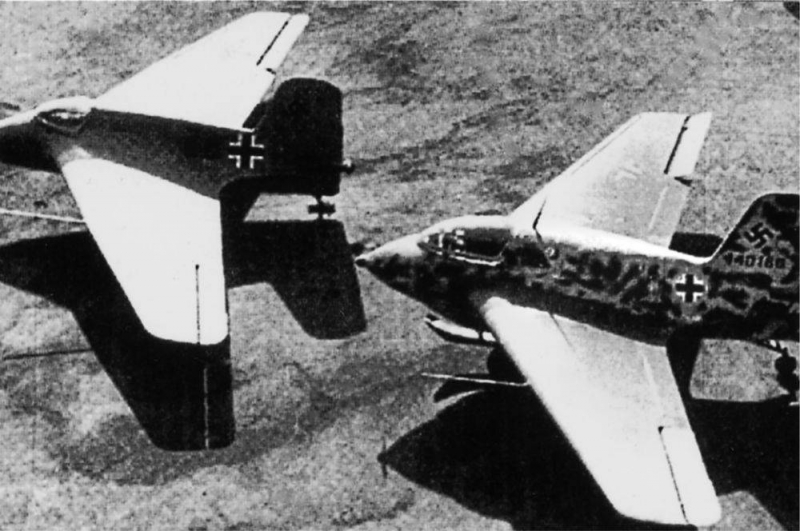 German rocket fighter «Messeršmitt Me 163 Comet»
German rocket fighter «Messeršmitt Me 163 Comet»
The U-864 crew had to make two stops, before heading to distant Asia: a long stay at the Karljohansvern naval base in the tiny Norwegian village of Horten near Oslo, followed by a one-day stop to pick up additional supplies and refuel on the coast in Kristiansand. From there she was to cross the equator in the South Atlantic., round the Cape of Good Hope in the Indian Ocean, and then south from Madagascar to Penang in Malaysia - a distance of almost 12 000 nautical miles.
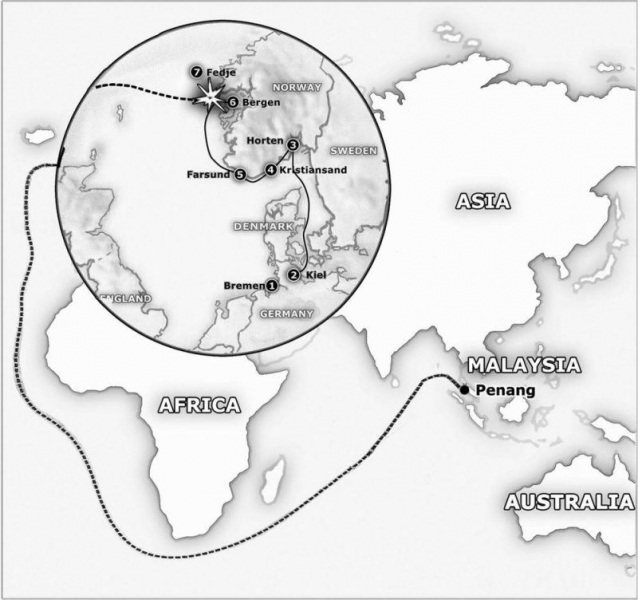
Horten conducted underwater testing and certification of diving equipment, established in October 1944 of the year. The snorkel would allow her to take in fresh air for the crew and diesel engines, sinking to periscope depth, and thus cover long distances unnoticed by the enemy. The Germans first learned about this apparatus in 1940 year, finding him on a captured Dutch submarine. But only at the end of the war, when advances in Allied radar technology improved their skills in early warning of submarines, Dönitz ordered snorkels to be built into all new boats, off the assembly line.
U-864, commissioned prior to Dönitz's order, required modification. In Horten (Norway) U-864 spent most of December, testing your scuba diving and diving systems and to some extent the endurance of your crew - through a series of repetitive challenging tests.
Refilling fuel and supplies, U-864 left Kristiansand 29 December, to start your journey east, cruising on the surface with two patrol boats as escort. They soon parted, the submarine slid to periscope depth, when she left Skagerrak.
However, U-864 did not go far offshore.. Some time later, Wolfram radioed: something is wrong with the snorkel. The problem was considered serious, the operational command ordered him to go to Farsund, a tiny fishing village about fifty miles west of Kristiansand, just outside the entrance to the strait.
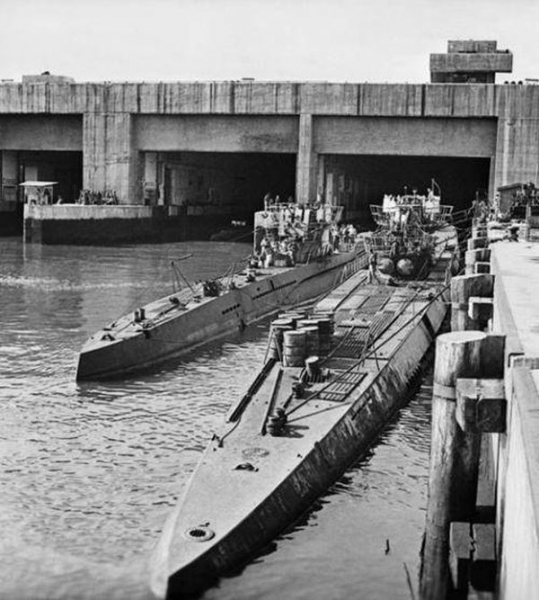 German Type VII submarines (left) And IX in front of the bunker in Trondheim
German Type VII submarines (left) And IX in front of the bunker in Trondheim
For Wolfram, the problems suddenly got worse.. He did not have time to order to slowly turn to the port side, how the submarine ended up in shallow water and hit the rocks. The uneven cliffs of the Norwegian fjords could easily damage the ship's hull. Tungsten misjudges the depth or shape of the strait. The fate of Operation Caesar and the submarine itself hung in the balance. Wolfram immediately ordered the crew to inspect the sub., he was told, that there is no internal damage to the case.
The captain of the German submarine was lucky, in keel U-864 they transported dangerous goods - 67 tons of mercury. It is an essential element for the production of weapons.. Mercury was often used as a detonator. On board were 1857 vessels, each contains two liters of mercury. One vessel weighed about 30 kg. Mercury cargo replaced most of the lead ballast. Engineers and mechanics in Farsund were unable to solve problems, snorkel-related. 1 January 1945 U-864 traveled from Farsund to a large Norwegian city in the north. Due to the breakage of the snorkel, she was forced to move on the surface under escort and slowly moved forward.
The sub was drawing too much attention to itself, although she was doing a secret mission. British intelligence officials have already decrypted the information, intercepted from the Germans. They learned, that Germany sent "Wunderwaffe" to Japan. Allied Command ordered the elimination of U-864, when the submarine is most vulnerable.
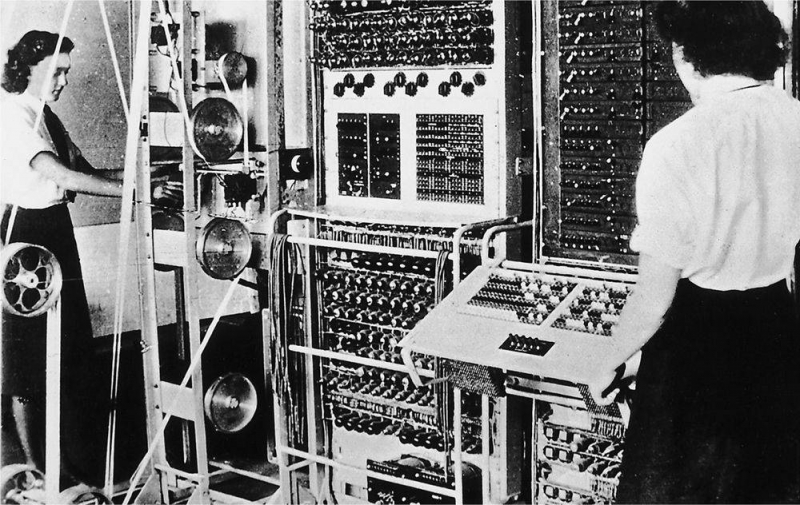 Colossus ("Colossus"), tube computer, used to break ciphers at Bletchley Park
Colossus ("Colossus"), tube computer, used to break ciphers at Bletchley Park
8 February 1945 g. German submarine U-864 under the command of Wolfram left Bergen after repairs. Wolfram headed for the Shetland Islands: 160 km north of Scotland. But soon there was a problem: one of the submarine's engines was working intermittently. Loud intermittent vibrations, a gradual decrease in engine performance and, with time, perhaps, even complete breakdown. Disappointment aboard the sub had to be palpable.. Little of, that the noise of the engine could attract the attention of the enemy, but also breakdown in distant waters, far from any hope of help, will be disastrous. Wolfram immediately contacted the command, to report your situation. He was ordered to dive and await an escort..
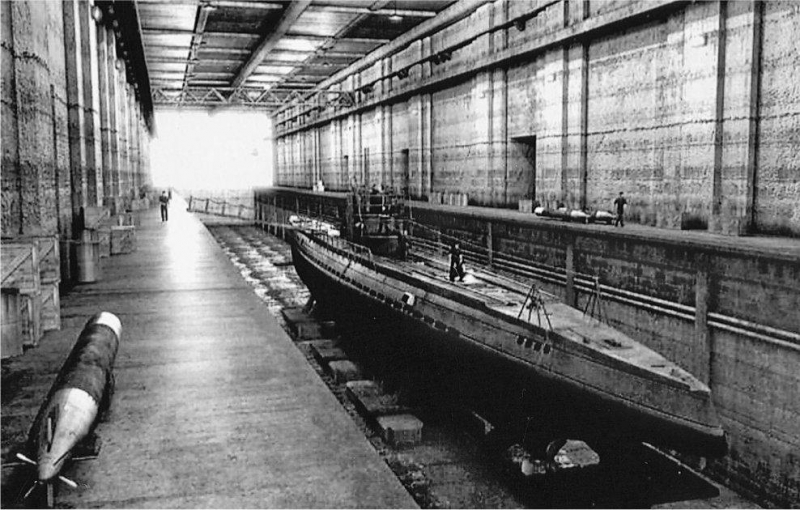 Submarine bunker "Bruno" in Bergen
Submarine bunker "Bruno" in Bergen
2 February 1945 g. submarine "Venturer" under the command of 25-year-old Lieutenant James X. Laundersa withdrew from Lerwick Submarine Base.. The Venturer is a Class V submarine from a range of maneuverable, small submarines, designed by the Royal Navy for use in coastal waters; they were less than half the size of U-864. Launders and his team from 36 people had combat experience - in November 1944 they sank U-771 during her surface voyage in Andfjord in Northern Norway.
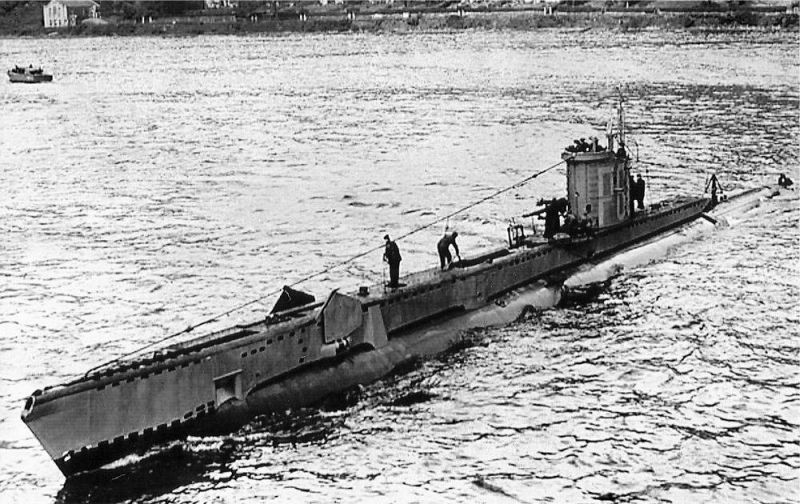 HMS Venturer under the command of Lieutenant James Stuart Launders
HMS Venturer under the command of Lieutenant James Stuart Launders
It was planned to conduct an operation near the southern port of Bergen. Patrolling these waters, could intercept German ships, when they returned to base. When the Venturer got there, the crew received an encrypted message from headquarters. The order was given to patrol the coastal waters off Fedier Island. Launders was ordered to go to Fedya and was directly in the path of U-864..
morning 9 February 1945 g. the acoustician on the Venturer heard a faint noise. About 10:00 his first lieutenant in the periscope discovered a submarine, at the moment when the commander of U-864 was looking through the periscope for his ships to be escorted to the base. U-864 was driven by one diesel engine, using snorkel. But the data wasn't enough to attack. Except bearing to the target, distance was required, but it is desirable, more course and speed. An unusually long period for the submarine to determine the elements of target movement followed.. "Venturer" walked parallel and to the right. Both boats were in a situation, for which the crews were not prepared.
Launders expected, that U-864 will float up and thus provide him with an easy target. But it became clear, that the enemy is not going to float and goes, using zigzag. According to indirect data (change in bearing depending on your own maneuvers) Launders gradually gained distance to the target and was able to estimate the speed and length of the zigzag knees.. For calculations, he used a tool of his own invention., essentially, specialized circular logarithmic scale. After the war and instrument, and the very method of launching an attack by bearings has become the standard. The method later formed the basis of an algorithm for solving a 3-dimensional problem of torpedo firing.
From time to time, both boats risked raising the periscope.. Launders used this to clarify bearings.. After a three-hour pursuit of a German submarine, Venturer Captain James Launders decided to take the risk., based on U-864's movements. The risk paid off. Hearing the launch of torpedoes, U-864 crew undertook evasive maneuvers, avoiding being hit by the first three torpedoes, but the fourth hit the mark. The explosion broke the hull of the boat in half. All 73 crew member died; no one was saved. This was the first time, when one submarine sank another, while both were submerged.
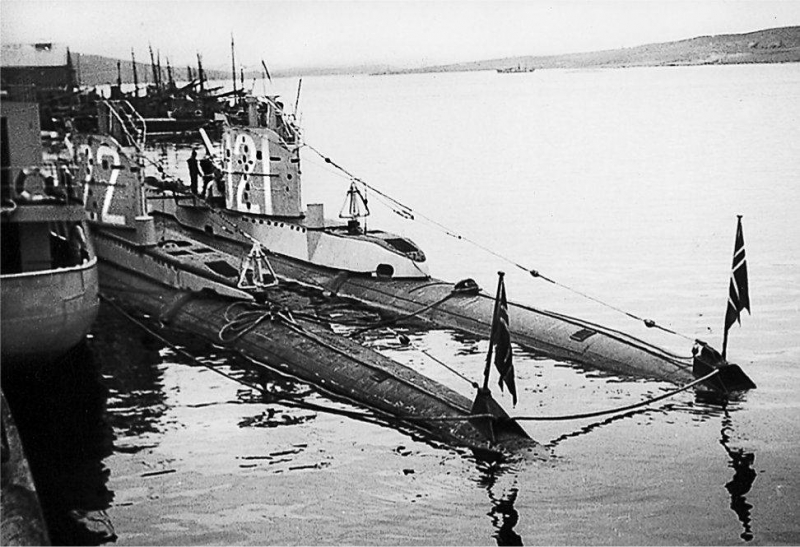 Lerwick. In the Scottish Isles.
Lerwick. In the Scottish Isles.
In April 1945 years, Admiral Karl Dönitz sent the second transport submarine to the Far East at about the same course, as U-864. Type XB U-234 carried many "Wunderwaffe" among 240 tons of cargo, as well as a dozen extra urgent passengers, including two Japanese naval engineers.
10 May U-234 surfaced, and the captain received Dönitz's last order to surrender. Lieutenant Commander Fehler will obey orders and surrender 17 May in front of a pair of US destroyers south of Grand Banks. Shortly before the arrival of the American boarding group, Japanese engineers retired to their cabins and committed suicide..
When the Americans searched the submarine, on board, along with the rest of the cargo, half a ton of uranium oxide was found. The further fate and nature of the cargo are unknown to the present..
Norwegian Navy Discovers World War II German U-864 Shipwreck in March 2003 of the year. Since then there has been a debate, polls and political discussions about, how to best deal with pollution from a cargo of mercury in a sunken submarine and the surrounding seabed.
AT 2014 Norwegian Coastal Administration (NCA) conducted a survey of the sunken boat and presented a thorough study of measures to prevent mercury pollution. The survey showed, that containers with mercury gradually corrode in seawater. Removal of debris and contaminated masses from the seabed near the sunken ship will spread contamination beyond the already affected area. Burying a boat under a 12-meter layer of sand is the best and most environmentally friendly solution..
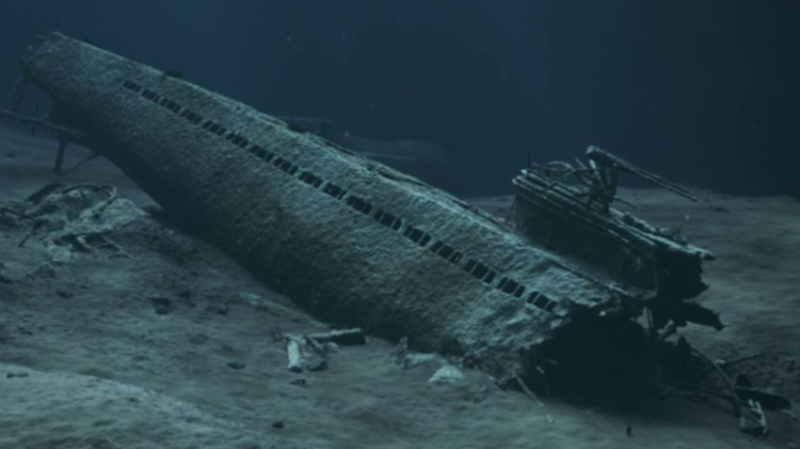 Debris of U-864 on the seabed
Debris of U-864 on the seabed
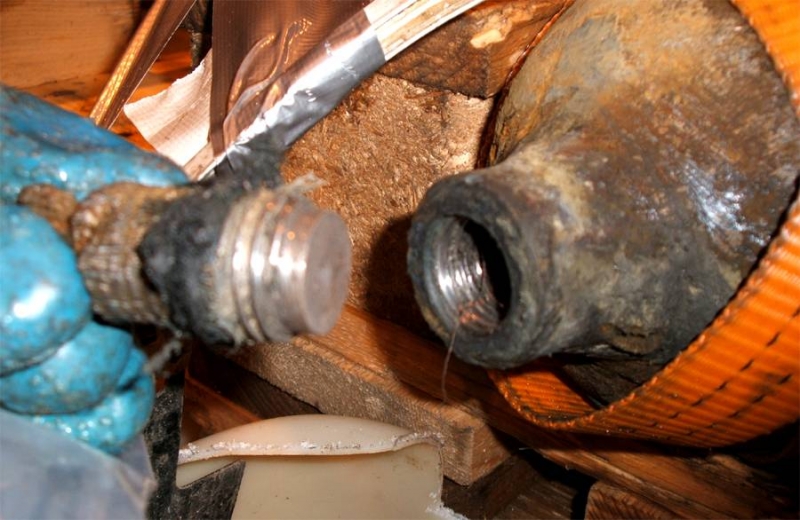 Mercury container
Mercury container
The Norwegian government made a decision based on numerous reports and studies, conducted by the NCA with the support of a wide range of experts, who concluded, that disposal is the best and most environmentally friendly solution for U-864. On 2019 year 30 million. Norwegian kroner allocated for engineering, tender and general preparatory work. Capping, probably, will be completed by summer 2020 of the year.
Based on materials:
— club.berkovich-zametki.com/?p=37345
— regjeringen.no/en/aktuelt/environmental-solution-for-the-shipwreck-of-the-ww-ii-submarine-u-864/id2614253/
— ru.wikipedia.org/wiki/HMS_Venturer_(1943)







